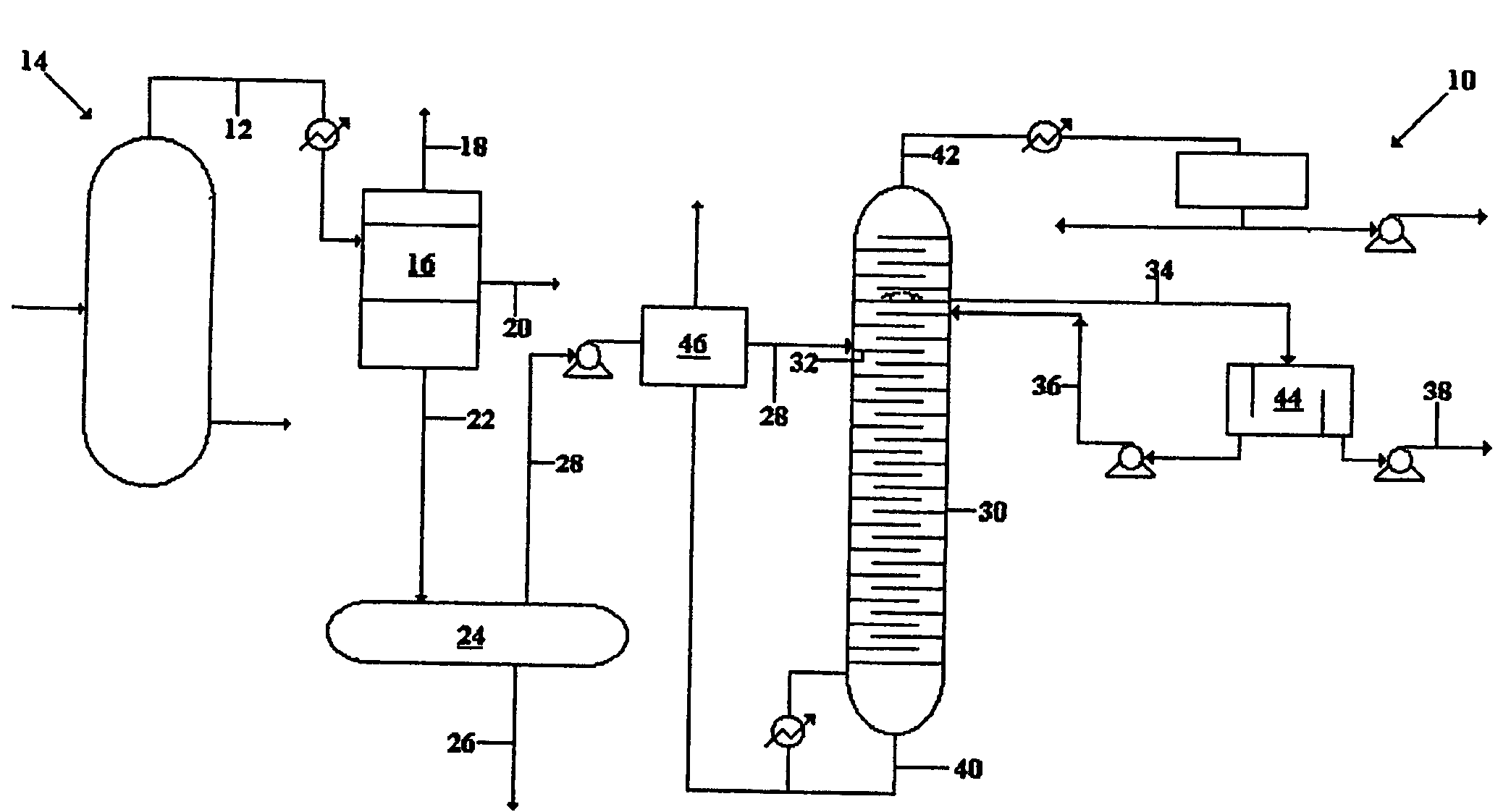Method of purifying a water-rich stream produced during a fischer-tropsch reaction
a technology of fischer-tropsch reaction and purification method, which is applied in the direction of hydrocarbon distillation, liquid hydrocarbon mixture production, oxygen-containing compound preparation, etc., can solve the problems of extreme non-ideal behaviour between water and water, complicated water distillation column, and nac's and water in distillation column, etc., to achieve easy liquid-liquid separation and increase the droplet size of suspended hydrocarbons
- Summary
- Abstract
- Description
- Claims
- Application Information
AI Technical Summary
Benefits of technology
Problems solved by technology
Method used
Image
Examples
Embodiment Construction
[0039]In the drawing, reference numeral 10 generally indicates a method of separating at least a fraction of non-acid chemicals (NAC's) from a condensed water rich fraction 28 of gaseous raw product 12 produced during a Fischer-Tropsch (FT) reaction 14.
[0040]The process 10 includes a preliminary step wherein suspended hydrocarbons are removed from a fraction of the gaseous raw product 12.
[0041]The preliminary step includes condensing the gaseous raw product 12 and separating it in a typical three-phase separator 16. The three streams exiting the separator 16 are: a tail gas 18, a hydrocarbon condensate 20 including mainly hydrocarbons in the C5 to C20 range and a so-called reaction water stream 22 containing NAC's, water, acids and suspended hydrocarbons.
[0042]The reaction water stream 22 typically has the following composition (by mass): 96% water, 3% NAC, about 1% acids and from about 0.05 to 1.0% suspended hydrocarbons in the C5 to C20 range.
[0043]The reaction water stream 22 is ...
PUM
| Property | Measurement | Unit |
|---|---|---|
| concentration | aaaaa | aaaaa |
| mass | aaaaa | aaaaa |
| soluble | aaaaa | aaaaa |
Abstract
Description
Claims
Application Information
 Login to View More
Login to View More - R&D
- Intellectual Property
- Life Sciences
- Materials
- Tech Scout
- Unparalleled Data Quality
- Higher Quality Content
- 60% Fewer Hallucinations
Browse by: Latest US Patents, China's latest patents, Technical Efficacy Thesaurus, Application Domain, Technology Topic, Popular Technical Reports.
© 2025 PatSnap. All rights reserved.Legal|Privacy policy|Modern Slavery Act Transparency Statement|Sitemap|About US| Contact US: help@patsnap.com


